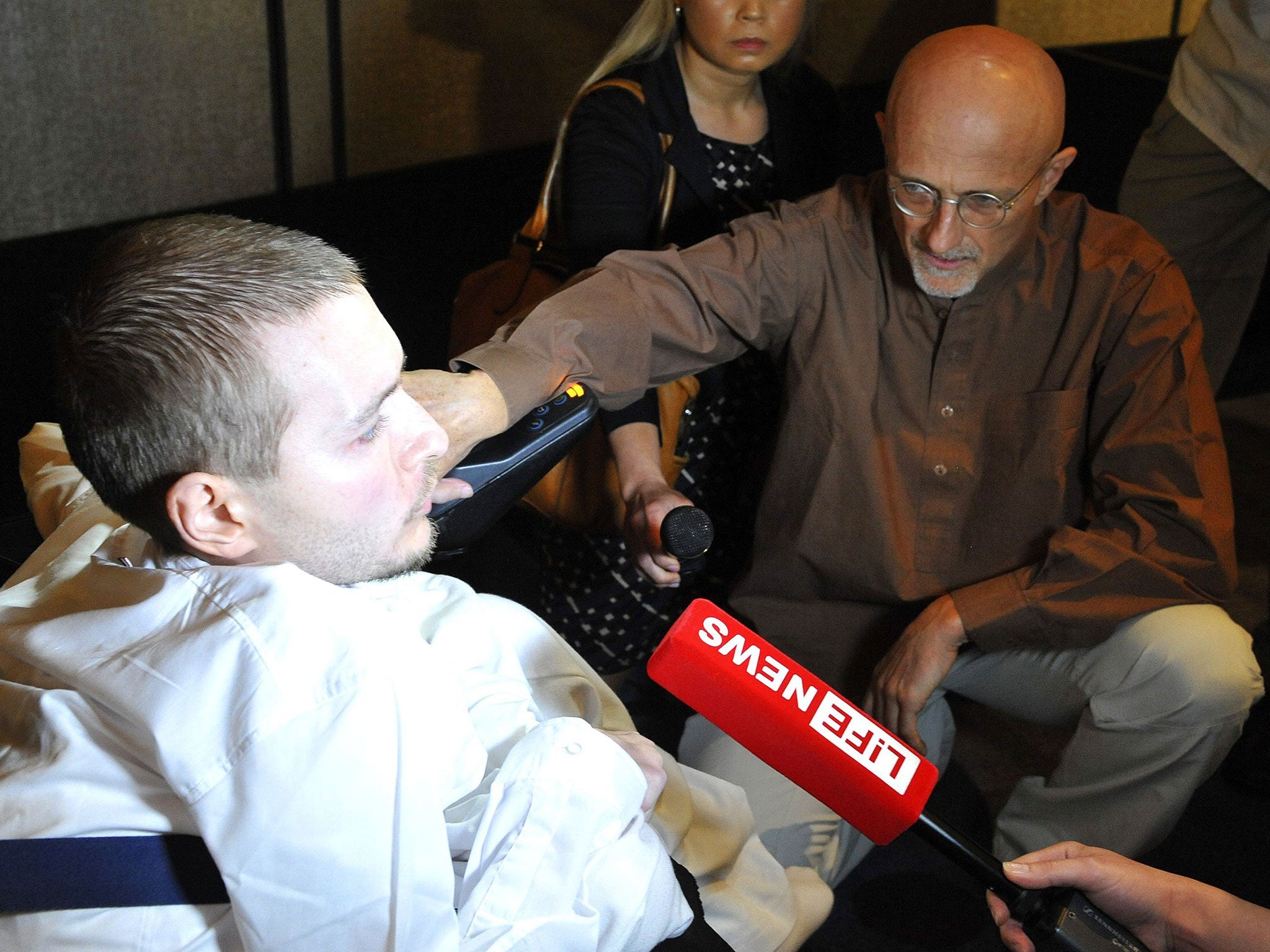Human head transplant scientist says promising animal studies mean first procedure could take place next year
Critics have said the latest papers lack detail and data to be convincing

Your support helps us to tell the story
From reproductive rights to climate change to Big Tech, The Independent is on the ground when the story is developing. Whether it's investigating the financials of Elon Musk's pro-Trump PAC or producing our latest documentary, 'The A Word', which shines a light on the American women fighting for reproductive rights, we know how important it is to parse out the facts from the messaging.
At such a critical moment in US history, we need reporters on the ground. Your donation allows us to keep sending journalists to speak to both sides of the story.
The Independent is trusted by Americans across the entire political spectrum. And unlike many other quality news outlets, we choose not to lock Americans out of our reporting and analysis with paywalls. We believe quality journalism should be available to everyone, paid for by those who can afford it.
Your support makes all the difference.An Italian scientist who wants to be the first neurosurgeon to conduct a human head transplant says the procedure could be possible as early as next year, after three promising new animal studies.
Sergio Canavero says three new papers – all edited by him and published on last week in the journal Surgical Neurology International – show that it is possible to overcome one of the biggest hurdles to attaching a new body to a human head – reconnecting the spinal cord.
Critics say the three studies do not have the breadth of data or the detail to warrant moving forward with tests on humans.
But the South Korean team involved in conducting the experiments say they provide valuable proof of the principle that a chemical solution, injected into the spinal cord, can encourage severed neurons to reattach.
The most extraordinary of the case studies involved a dog that had become completely paralysed after a neck injury caused severe damage to the spine.
Doctor C-Yoon Kim and his team at Konkuk University in Seoul, who have been working with Canavero, said 90 per cent of the dog’s spinal cord was estimated to have been cut.
According to the paper, they injected the dog with the chemical solution polyethylene glycol or PEG, and after two days it was able to move its front paws.
A video of the dog’s progress showed that after two weeks, it was able to drag its hind limbs by its torso and forelimbs. According to New Scientist, which has seen the video, during the third week it was able to walk.
In another study, the South Korean team severed the spinal cords of 16 mice. Half of them were given the PEG solution, and five of those eight showed signs of regaining movement. The other three died, as did the entire control group, none of which recovered from the paralysis.
And in the final study, five out of a group of 10 rats were given a PEG solution enhanced with graphene nanoribbons – in theory, providing a sort of scaffold along which the neurons can grow back. The team said a flood at the lab killed four of the five PEG-dosed rats, though the fifth recovered the ability to walk.
Experts in the field have said the rat and mice studies did not involve sufficient numbers to be convincing – particularly the experiment hit by flooding. There are also suggestions the team did not provide enough detail of the specific injuries suffered by the dog before its treatment and apparent recovery.
Canavero believes that with the promise of PEG, he could perform the procedure by the end of 2017. A hospital in Vietnam says it is willing to host the surgery – he says he just needs a viable donor.
Yet speaking to New Scientist, medical ethicist Arthur Caplan at New York University said the latest papers suggest we are still a long way off even contemplating such a transplant.
“This work would put them about three or four years from repairing a spinal cord in humans,” he said. “It would put them maybe seven or eight from trying anything like a head transplant.”
Alongside the risks of reconnecting the spinal cord, the body rejecting the head is another of the biggest challenges preventing human head transplants from taking place.
Join our commenting forum
Join thought-provoking conversations, follow other Independent readers and see their replies
Comments